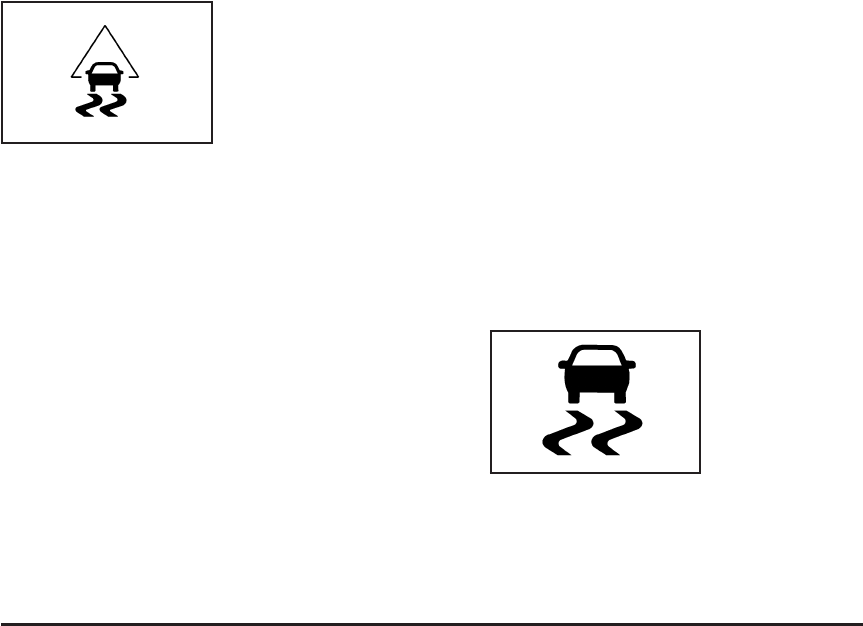
This light flashes on the
instrument panel cluster
while the ESC system
is on and activated.
ESC activates when the computer senses a discrepancy
between your intended path and the direction the vehicle
is actually traveling. ESC selectively applies braking
pressure at any one of the vehicle’s brakes to help steer
the vehicle in the direction which you are steering.
When the system activates, an ESC ACTIVE message
displays on the Driver Information Center. See DIC
Warnings and Messages on page 3-41. This light flashes
on the instrument panel cluster when the ESC system
is on and activated. You may also hear a noise or
feel vibration in the brake pedal. This is normal.
Continue to steer the vehicle in the direction you want
it to go.
When the light is comes on and the message(s)
SERVICE ESC, ESC OFF, or both displays, the system
will not assist the driver in maintaining directional
control of the vehicle. Adjust your driving accordingly.
See DIC Warnings and Messages on page 3-41.
See Electronic Stability Control (ESC)/Traction Control
System (TCS) Indicator/Warning Light on page 3-29
for more information.
The Electronic Stability Control (ESC) system is
automatically enabled whenever the vehicle is started.
To assist the driver with vehicle directional control,
especially in slippery road conditions, you should always
leave the system on. But, ESC can be turned off if
needed.
If the vehicle is in cruise control while the system begins
to assist the driver maintain directional control of the
vehicle, the ESC/TCS light flashes and the cruise control
automatically disengages. When road conditions allow
you to use cruise again, you may re-engage the
cruise control. See Cruise Control on page 3-10.
The ESC/TCS button
is located on the
instrument panel.
The traction control system can be turned off or back on
by pressing the ESC/TCS button. To disable both
traction control and ESC, press and hold the button from
five to ten seconds.
4-9


















